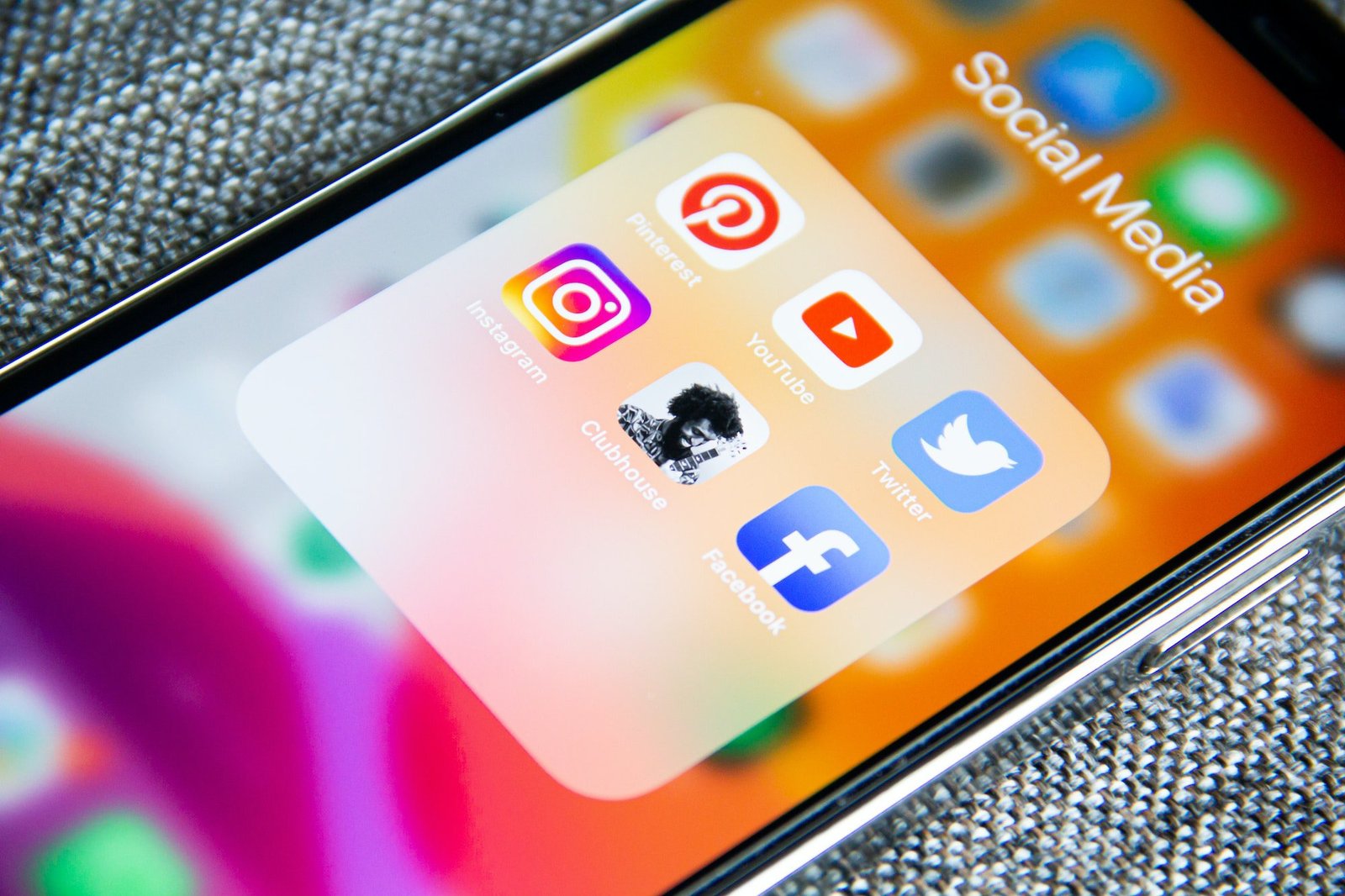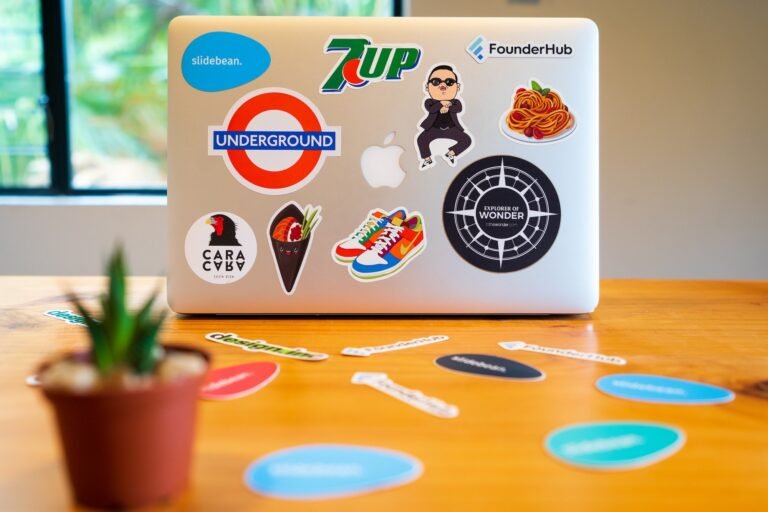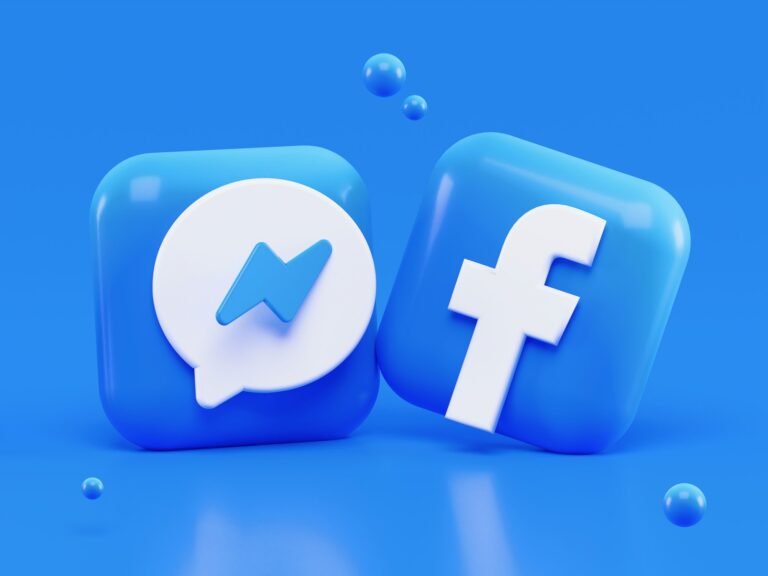Winning the Social Media Game: Mastering the Art of Paid Social Media Advertising
In an era where social media platforms become battlegrounds for brand visibility, paid social media advertising is your secret weapon. Picture this: You're not just playing the game, you're setting the rules. You're no longer a mere participant, but the master of the arena.
This is the power of paid social media advertising in the vast, dynamic world of social media. It's like the wild card that can turn the tables in your favor. Whether you're a start-up looking to make a name or an established brand aiming to dominate the competition, paid social ads are a big help.
Are you ready to unlock the full potential of your social media presence? Let's dive into the art of paid advertising and conquer this game, one strategic move at a time.

What is social media?
Social media is a collection of online platforms and applications that facilitate user connection, communication, and content sharing. These platforms enable users to create and share content such as texts, photos, and videos. And to participate in social networking.
Social media serves as a powerful tool for branding, customer engagement, audience growth, and driving traffic to your website. It's a dynamic space where businesses and their audiences can interact in real-time. Hence, fostering a sense of community and deepening customer relationships.
What is paid social media advertising?
Paid social media advertising, often referred to as social media ads or simply "paid social," is a digital marketing strategy. It involves businesses paying to display promotional content on social platforms.
Unlike organic social media where businesses rely on organic content to create a social presence, paid social allows you to reach a broader audience beyond your existing followers. It involves creating paid social ads or sponsored content. And paying the social media network to display it to a target audience.
The magic of paid social lies in its advanced targeting capabilities. Using the vast amount of user data collected by social media networks, businesses can target their ads based on audience demographics like age, location, gender, interests, behavior, and more.
This paid social media strategy of a tailored approach means your ad campaign reaches the right people at the right time. Thus, amplifying their effectiveness and increasing the likelihood of engagement and conversion.
What are the advantages of investing in social media paid ads?
Raise Brand Awareness
The paid campaign can dramatically improve your brand’s visibility. The sheer volume of users on social platforms like Facebook and Instagram means that your ad campaign has the potential to be seen by a massive audience.
> For example, Coca-Cola's Share a Coke campaign on Facebook reached an estimated 6.5 million people in Australia alone, showcasing the power of paid ads in driving brand reach.
Targeted Advertising
As mentioned earlier, one of the biggest advantages of social media ads is their audience targeting feature. You can use targeted ads to reach a specific demographic or market segment. This ensures that your message reaches the right person at the right time.
Cost Effective
Paid social ads are often much more budget-friendly than a traditional paid promotion. You can control your budget and choose a ‘cost per result’ based on your campaign objective. It ensures that you get the most bang for your buck.
Boosted Website Traffic
Paid social ads can be a powerful tool for driving traffic to your website. Using call-to-action buttons such as "Learn More" or "Shop Now" can direct active users to your website. So they can further engage with your brand.

Increased Engagement
Since social ads appear directly in the targeted audience' feeds, they're more likely to engage with your content. This can lead to higher engagement rates, including likes, comments, shares, and more importantly, conversions.
Measurable Results
Unlike traditional ads, social advertising provides measurable results. You can track everything from the number of impressions and clicks your ad received to the conversion rate and ROI.
How much do I pay for social media advertising?
Your social media ads cost will depend on several factors, including your campaign objective, bidding strategy, budget, campaign optimization, industry, and more.
CPC (cost-per-click) and CPM (cost-per-thousand impressions) are the two most popular pricing models for paid social ads. CPC is when you pay each time someone clicks on your ad. While CPM is when you pay per 1,000 impressions of your ad.
Typically, CPCs range from $0.10 to $2.00, while CPMs range from $5.00 to $20.00 or more. Ultimately, you'll need to experiment with different ad formats, creative, and targeting options until you find the combination that works best for your campaign objectives and budget.

Tips to Nail Your Social Media Strategy
Here are some effective tips to optimize your social media marketing strategy:
Define your goals
Before starting any social media campaign, it's crucial to define your goals. Are you looking to increase brand visibility, boost engagement, drive web traffic, or generate sales? Having clear objectives helps guide your campaign strategy and allows you to measure the success of future campaigns.
Know your audience
Understanding your relevant audience is key to creating organic content that resonates. Dig into your social media analytics to learn about your followers' demographics and preferences. And create organic posts that your audience can relate to.
Create engaging content
Creating engaging content is a key aspect of successful social media marketing. Engaging content not only grabs the attention of your audience. But also encourages them to interact with your brand, fostering a stronger relationship.
Use interactive content
Interactive content such as quizzes, polls, or contests can also ramp up engagement levels. Such content can be fun for your audience, making them more likely to remember your brand and engage with further posts. Other businesses sometimes give out prizes for successfully guessing the trivia questions posted on the social network of businesses.
Leverage user-generated content
User-generated content (UGC) is a powerful way to foster community and authenticity around your brand. Encourage your followers to share their photos or experiences using a branded hashtag. This will spark a sense of belongingness for customers who are prioritizing the brand.
> GoPro’s user-generated content strategy is a prime example. They encourage users to share their action-packed GoPro footage for a chance to be featured on the brand’s account.

Regularly analyze and adjust your strategy
Social media trends and algorithms change quickly. Regularly reviewing your analytics and adjusting your ad placements based on performance is key to staying effective. Keep an eye on changes to the platform, and experiment with different post types or even new platforms.
> Burger King, for example, keeps a close tab on current trends and adjusts their paid social strategy accordingly. They recently launched a promotional campaign called “Whopper Neutrality” that capitalized on the debate surrounding net neutrality in the US. The creative campaign was a hit and quickly went viral.
Use Social Media Management Tools
Using social media management tools like Hootsuite or Buffer can help you schedule posts. They also manage all your social media accounts in one place and provide valuable analytics and insights into post-performance. This helps streamline your workflow and keeps track of various metrics like post reach, engagement, and growth.

Engage with your audience
Responding to comments, answering questions, or even liking and sharing user posts can foster a sense of community and show your followers that their opinions matter. This active engagement can build a stronger relationship with your audience, increasing their loyalty and encouraging more interaction with your brand.
Another method of audience engagement is through user participation initiatives. These can take the shape of Q&A sessions, live chats, or encouraging user content submission.
> A notable example is the cosmetics brand Lush. They've held live Q&A sessions on Instagram with their product inventors, allowing followers to ask questions and get real-time responses. This direct engagement strategy has helped Lush build a strong relationship with its customer base, enhancing its brand image as transparent and customer-focused.
What are the different ad types?
There are several types of ads used across different social media platforms. Each type of ad serves a unique purpose and caters to different kinds of audience interactions.
Image Ads
Image ads are a popular type of paid social media that primarily utilizes visually compelling graphics or photographs to grab the audience's attention. These paid ads are often accompanied by a short text description and a compelling call-to-action (CTA).
Image ads can be static or dynamic ads, with the latter incorporating moving elements to create more engaging visuals. They can be used for a range of marketing goals, such as increasing brand awareness, driving traffic to a website, or promoting sales.
Their effectiveness lies in their ability to convey a brand’s message in an eye-catching way. It makes it easier for the audience to remember the ad and, subsequently, the brand.

Video Ads
Video ads are paid social media advertising that utilizes motion, sound, and visuals to tell a story or demonstrate a product in action. They can range from short, looping clips to full-length commercials. And offering a dynamic way to engage viewers and leave a lasting impression.
Video ads can take many forms, including in-stream ads that play before, during, or after other videos; ads in social media feeds; or video display ads on websites. They have proven to be highly engaging, with users often more likely to remember and interact with video content than static images or text.
> An example of effective video advertising is Apple's product launch ads. Apple uses high-quality, cinematic videos to introduce new products and showcase their features in a visually stunning way. The videos are not only informative. But they also evoke an emotional response, associating the product with feelings of innovation, sophistication, and high-quality design.
Carousel Ads
Carousel ads can be especially effective for e-commerce businesses, allowing them to highlight multiple products at once. Each card in the carousel can feature a different product, with a direct link to its purchase page.
This not only gives the audience a broader view of the brand's offerings. But also simplifies the journey from the ad to purchase, leading to potentially higher conversion rates.
> For example, Airbnb utilizes carousel ads effectively to showcase multiple properties in one ad. Each image in the carousel features a different property, all appealing to different audience preferences. This way, Airbnb not only showcases a range of options to potential customers. But also maximizes the chance that viewers will see a property they are interested in.

Slideshow Ads
Slideshow ads allow advertisers to create a series of images or video clips that play in a sequence, like a slide show. They often include accompanying text or a voice-over to narrate the visual content.
Audiences can view the content at their own pace by clicking through the slides. Slideshow ads are ideal for storytelling or for demonstrating a process or a series of related products. They can be used across various social channels such as Facebook and Instagram.
> An example of a brand utilizing slideshow ads is IKEA. They create compelling slideshows showcasing how their furniture pieces fit together in a coordinated living room set. Each slide features a different piece of furniture, along with a brief description and price. This not only allows IKEA to highlight multiple products in a single ad. But also helps potential customers visualize how they can use the items in their own homes.
Collection Ads
Collection ads are a type of social media advertising that combines both video or images with product catalogues. They allow brands to showcase a series of products or services all in one ad. And providing a seamless browsing experience for users without having to leave the social media platform.
The primary goal of collection ads is to drive product discovery, consideration, and direct response actions, such as purchases.
> For instance, fashion brand H&M uses collection ads to showcase their seasonal collections. The ad starts with a captivating cover image or video, followed by several product images from the collection. When users click on the ad, they're taken to a full-screen storefront where they can browse through the products. And click on individual items for more information or to make a purchase.
Playable Ads
Playable ads are a unique type of interactive advertising that allows users to experience a game or an app before downloading it. The ad offers a mini version of the game or app that users can interact with directly within the ad itself, providing a "try before you buy" experience.
This type of ad increases user engagement and often leads to higher conversion rates, as users who choose to download the app after interacting with the ad are more likely to use and enjoy the app.
> For example, mobile gaming company Supercell often uses playable ads for its popular game, Clash Royale. In the ad, users can play a short version of the game, getting a feel for the gameplay and graphics. After the trial period, users are prompted to download the full version of the game. This hands-on experience lets users know exactly what they're getting before they download the app, increasing the likelihood that they'll enjoy the game and continue to play it.
Lead Generation Ads
Lead generation ads are a type of social media advertising specifically designed to collect user data, such as names, email addresses, and phone numbers, directly within the social media platform.
These social ads usually feature a call-to-action prompting users to sign up, subscribe, download, or fill out a form, in return for something of value like a free trial, a discount, or entry into a contest. This type of ad is particularly useful for brands looking to build their email lists, generate inquiries, or drive sign-ups.
> A perfect example of a company using lead generation ads is MasterClass, an online education platform. MasterClass uses lead generation ads to offer a free trial of its courses. The ad showcases a variety of classes taught by renowned professionals and invites users to sign up for a free trial directly within the ad by including in-app form fills. By doing this, MasterClass captures user data for potential leads, who have already shown interest in their offerings by engaging with the ad, and can then be nurtured through email marketing or direct contact.

Messenger Ads
Messenger ads are a type of paid social media ad that appears in the messaging interfaces of platforms such as Facebook Messenger. They allow brands to engage with users in a more personal and direct manner, providing an opportunity for real-time communication and customer service.
Messenger ads can also be used to deliver special offers or exclusive content to users who have previously interacted with the brand, helping to nurture customer relationships and drive loyalty. These ads can be used to reach potential customers, deliver targeted messages, and even facilitate transactions.
> For example, Sephora, a renowned cosmetics brand, uses Messenger ads to provide personalized beauty advice and product recommendations. When a user interacts with a Sephora ad in their Messenger feed, a chat window opens with a virtual assistant asking questions about the user's beauty needs and preferences. Based on the responses, the assistant suggests specific products and links to the Sephora online store for purchase. This direct, personalized interaction not only enhances the customer experience but also drives direct sales.
Search Ads
Search ads are a type of paid social media ad that appears in search engine results when users search for specific keywords. These ads are highly targeted, as they're based on the user's search intent, and they can drive high-quality traffic to your website or landing page.
Search ads usually include a headline, a description, and a URL, and they may also feature additional information like ratings, location, or call extensions.
> One example is Sephora, which utilizes search ads to promote its beauty products. If a user searches for "best mascara" or "lipstick brands", they're likely to see a Sephora ad in the search results. These paid campaigns often include ratings and reviews, which can boost consumer trust and encourage click-throughs. By aligning its ad strategy with search intent, Sephora effectively reaches potential customers who are already interested in its products.
What are examples of paid social media ads?
Google Ads
Google Ads, previously known as Google AdWords, is a pay-per-click (PPC) advertising platform that allows businesses to display their targeted ads on Google's search engine results pages (SERPs) and its partner sites.
Social ads are displayed based on the keywords that users input into the search engine, and advertisers bid on these keywords for their paid ads to appear.
When a user searches, Google dips into the ad pool and selects a set of winners to appear in the valuable ad space on its search results page. The "winners" are chosen based on a combination of factors, including the quality and relevance of their keywords and ad campaigns, as well as the size of their keyword bids.
Google Ads operates on an auction system, which takes place every time a user performs a keyword search. Advertisers must choose the maximum bid amount they're willing to pay per click, decide on keywords they want to bid on and set their geographical location where the ad will be shown. If their bid is among the highest, their ads will appear when users search for that keyword.
The cost of Google Ads varies based on several factors, including the competitiveness of the keywords, the relevancy of the ad, and the geographic location of the user. The ultimate goal of Google Ads is to get users to click on the ad, visit the advertiser's website, and perform valuable actions such as making a purchase, signing up for a newsletter, or filling out a form.

Example:
For instance, if you search for "running shoes," you'll likely see ads from various shoe companies. These companies have identified "running shoes" as a keyword for their products, have placed a bid on the keyword, and have designed relevant ads to attract users. When you click on the ad, you're taken to the shoe company's website, and they are charged for your click. This way, Google Ads provide an effective way for businesses to drive targeted traffic to their websites.
Facebook Ads
Facebook Ads is a powerful advertising platform that lets businesses display ads across Facebook's vast social network, which includes Instagram and Messenger.
The Facebook ad operates on a pay-per-click model, similar to Google Ads, but offers more specific audience targeting options based on user demographics, interests, behaviors, and connections.
When setting up a Facebook ad, businesses choose the objectives for their Facebook campaigns, such as increasing website visits, boosting brand awareness, or promoting product sales.
They can then define their target audience by selecting various parameters like age, gender, location, and interests. Facebook's extensive user data allows businesses to precisely target their ads, increasing the likelihood of reaching potential customers who would be interested in their product or service.

Twitter Ad
Twitter Ads is another potent platform for businesses looking to advertise their products or services on social media. Similar to Facebook, Twitter Ads also operates on a pay-per-click model and offers a range of targeting options.
However, what sets Twitter apart is its real-time, conversational nature, which can be ideal for businesses aiming to engage their audience in active discussions or capitalize on trending topics.
One remarkable feature of Twitter Ads is keyword targeting, which allows businesses to reach users based on the tweets they have recently posted or engaged with. This is particularly useful for advertisers who wish to tap into trending conversations related to their industry or product.
Instagram Ads
They are effective for businesses to reach a visually engaged audience. Instagram, a platform owned by Facebook, operates on the same PPC (Pay-Per-Click) model and leverages Facebook's powerful ad-targeting capabilities.
Businesses can create photos, videos, carousels, slideshows, or story ads to promote their products or services. They select their objective (like brand awareness, website traffic, or product sales), define their target audience (using demographics, interests, and behaviors), set their ad spend, and specify the duration of the ad run.
Instagram's algorithm then displays the ads to users who are likely to be interested, based on the specified criteria. For instance, if a user frequently engages with posts about fitness, they might see ads from sports brands or local gyms.
The ultimate goal of Instagram Advertising is to engage users and drive them to a specified action, like visiting the advertiser's profile, or website, or purchasing a product.

Linkedin Ads
It is yet another influential platform for businesses seeking to reach a professional demographic. LinkedIn operates on a pay-per-click or impression-based model, making it an ideal platform for businesses looking to establish B2B connections, recruit talent, promote products, or boost brand awareness in a professional setting.
Creating a LinkedIn Ad involves choosing a campaign objective, similar to the other social media networks, with options such as driving website traffic, increasing brand awareness, or promoting engagement.
The targeting parameters on LinkedIn are industry-specific, allowing businesses to target users based on their profession, industry, job title, level of seniority, company size, and skills, to name a few.
What sets LinkedIn Ads apart is its ability to reach B2B audiences and decision-makers. The platform's comprehensive user data enables businesses to create highly targeted campaigns that can reach the right people in the right industries.

Takeaway
Paid social media strategy may be difficult to master, but it is essential for businesses looking to target potential customers through the major social media platforms where the target audience is. But to maximize your paid social campaign, let the experts do it!
RDZ Technology, Inc. specializes in paid social media, providing businesses with the expertise necessary to create effective campaigns and reach their target audiences.
RDZ Technology, Inc has helped many businesses grow and reach their goals. For an experienced partner to help you join the world of paid social media advertising, look no further than RDZ Technology, Inc! Contact us today and start mastering your paid social media strategy.








